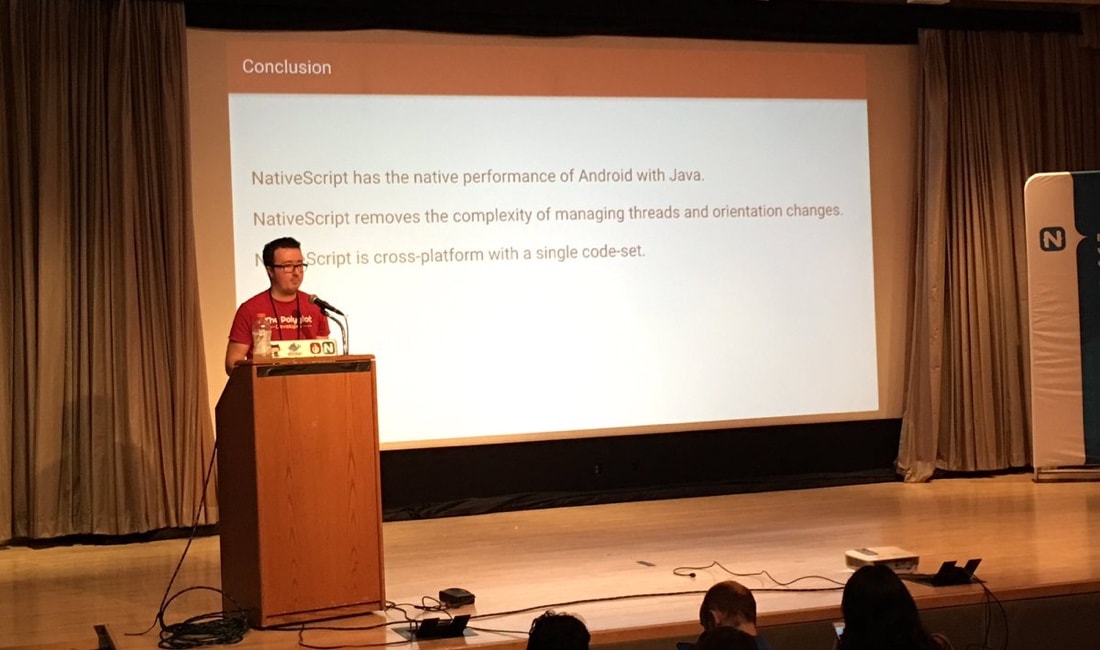Native To Hybrid And Back Again
I was recently attending NativeScript Developer Day 2017 in New York City, which is Telerik’s very own NativeScript conference.
This was a fantastic conference where I was not only a participant, but also a speaker at the event. At this event I had given a fresh presentation titled, Native to Hybrid and Back Again, where I had discussed my own personal experiences when it came to mobile application development.

I want to take the opportunity to summarize what I discussed during this event and share the slides that went with my presentation.
Read MoreApache Cordova And Ionic Framework Apps Are Not Native Mobile Apps
If you’ve been keeping up with my content since the birth of The Polyglot Developer, you’ll know that I was once a huge advocate of Apache Cordova development using frameworks like Ionic Framework. Having been a web developer and coming from native Android development with Java, cross-platform development using hybrid technologies seemed like a logical next step. Fast-forward to now, I’m no longer using Apache Cordova with Ionic Framework and have gone back to native development.
I recently came across an article by Ionic’s CEO, Max Lynch, titled, Cordova/Ionic Apps are Native Apps, trying to explain that Ionic applications are native mobile applications. There are some valid points made in this article, but as someone who spent several years using the technology as well as using applications built with the technology, it is not something I agree with as a whole.
Read MoreUse Mozilla’s LocalForage For Key-Value Storage In Ionic Framework
A few years ago I wrote an article called Use ngStorage for all Your AngularJS Local Storage Needs, which was intended to be for AngularJS in general. However, I understand many readers were using it in their hybrid Apache Cordova or Ionic Framework applications. There is nothing wrong with this. However, ngStorage is a wrapper for HTML5 local storage which is known to have compatibility issues under certain circumstances. That said, came across localForage, a library by Mozilla, which claims to be a wrapper for local storage, WebSQL, and IndexedDB, offering maximum compatibility.
We’re going to take a look at including localForage in an Ionic Framework Android and iOS application for storing data.
Read MoreConverting Your Ionic Framework 1 Application To Ionic 2
Ionic Framework has been around for a few years now and has completely changed the way people develop hybrid mobile applications. With Angular out and Ionic 2 nearing stable release, the Ionic 1 and AngularJS predecessor will be a thing of the past and forgotten. What if you’ve gone all in with the first version of Ionic Framework, how do you convert to the latest and greatest?
We’re going to see how to take a simple Ionic Framework application and convert it to Ionic 2. While there will be similarities, the process is manual, but better in the long run.
Read MoreGive Your NativeScript Mobile App An Ionic Framework Theme
I’ve been developing and writing about NativeScript for a while now. One of the things that everyone seems to bring up is that the UI NativeScript offers is unattractive in comparison to frameworks like Ionic. Sure, it may be unattractive, but it is a native UI and had you been developing with Java or Objective-C things would be no different. The UI is what you make of it.
I understand not everyone is a top notch UI designer so I thought I’d share a custom theme that will give you an attractive theme in your application. If you’re familiar with Ionic Framework, it will probably look very similar since the designer, Rob Lauer, made this theme to match.
We’re going to see how to give our native application created with NativeScript a familiar Ionic Framework theme.
Read MoreSend Emails In Ionic Framework Via The Mailgun API
A few years ago a wrote a tutorial for sending emails in an Ionic Framework Android and iOS application. The tutorial works great, but it requires that a mail application be used to finalize the send. In other words, you can set default values for email fields, but you still need to select Gmail or similar to actually send the email.
A popular question I receive is how to send emails without launching an email application. There are a few solutions to this. You could either set up your own server that sends emails and access it via an API, or you can use a service like the Mailgun.
We’re going to see how to send emails using the Mailgun API service.
Read MoreWhy You Should Not Use Ionic Serve For Hybrid Apps
I’ve written a lot of Ionic Framework and Ionic 2 blog articles and have answered even more questions and troubleshooted more problems. When it comes to Ionic Framework, if I had to estimate, I’d say about 80% of the time the problems were related to the Ionic Service solution that the Ionic team offers.
I’ve written a post similar to this before on the topic of properly testing your Ionic Framework applications, but since it’s alarming how many people are still running into these issues I think it is worth bringing up again.
Read More